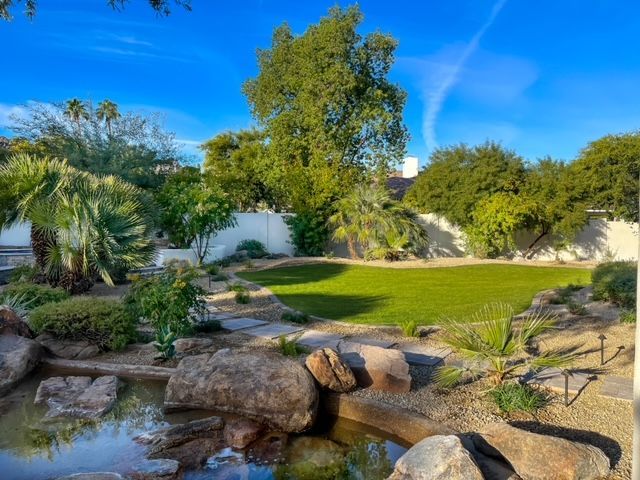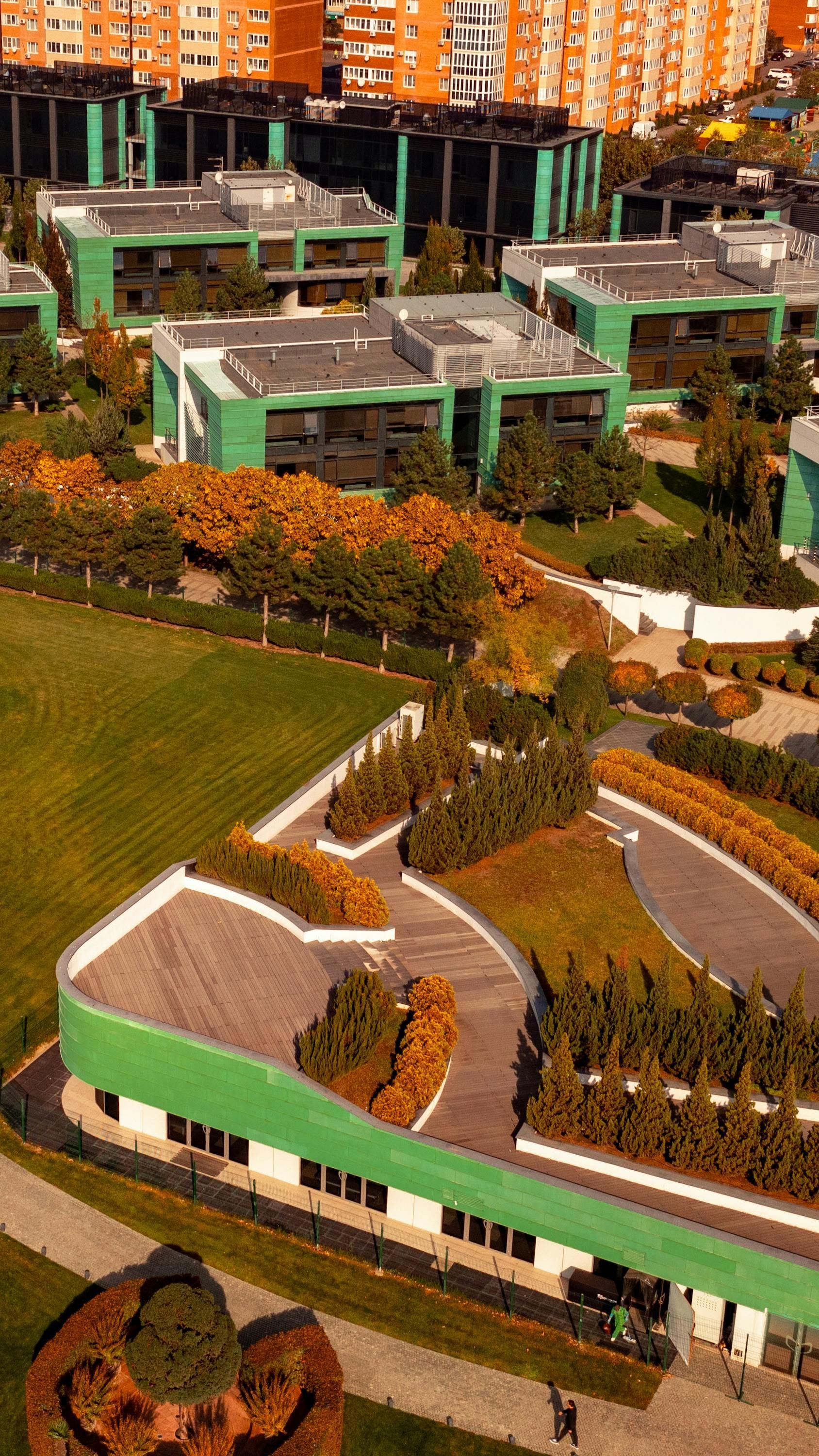Everything You Need To Know About Low-Water Landscape Design In Arizona

Low-water landscape design has become increasingly popular in Arizona. This is due to the increasing drought conditions that have been observed throughout the state and the need for efficient water management strategies.
By implementing low-water landscape designs, it is possible to reduce outdoor water use while still providing an aesthetically pleasing environment.
This article provides an overview of all aspects of low-water landscape design, including types of plants, irrigation techniques, and other considerations.
Types Of Plants
In Arizona, native plants are the best choice for low-water landscapes due to their ability to thrive in dry conditions. It is important to choose species that have adapted to arid climates, since they require less water and maintenance than non-native varieties.
Dry gardens typically incorporate native plants such as ocotillo, agave, palo verde trees and mesquite trees. These plants can tolerate long periods of drought without irrigation or supplemental waterings during the summer months.
Low-maintenance perennials like yucca, penstemon and Indian paintbrush can be added for color and texture. To ensure success with a low-water landscape design in Arizona, it is recommended to consult a professional landscaper who specializes in local plant materials and understands how to select the right species for your climate zone.
By doing so you will be able to create a beautiful outdoor space while helping conserve our limited natural resources.
Irrigation Techniques
In the hot and dry climate of Arizona, water conservation is a crucial part of successful landscape design.
Low-water landscaping involves selecting drought tolerant plants that require little to no supplemental irrigation while also employing efficient and sustainable water harvesting techniques.
A variety of low-water landscape design strategies are available for use in Arizona.
These include installing native plant species which can tolerate extreme temperatures; strategically positioning plants according to their individual needs; using mulch or other materials to reduce evaporation from soil surfaces; and incorporating rain gardens, swales, cisterns, and other water harvesting methods into existing landscapes.
Drought tolerant landscaping and water harvesting techniques allow homeowners to create lush outdoor spaces with minimal maintenance requirements, reducing both stress and water consumption.
Soil Ph Considerations
To ensure that a low-water landscape design in Arizona is successful, an understanding of soil pH considerations is essential.
The alkaline nature of the Sonoran Desert region requires careful consideration when selecting native vegetation and other plants for use in landscaping projects.
Native species such as mesquite, palo verde, ironwood and creosote bush are well suited to these conditions because they can tolerate wide ranges of soil pH and salinity.
When planning a low-water landscape design for Arizona soils it is also important to consider water harvesting techniques.
These include rain catchment systems, mulching with organic materials like wood chips or straw, using drought tolerant grasses, installing retaining walls along contours on slopes to prevent erosion and planting deep rooted perennials that draw moisture from deeper in the soil profile.
By incorporating these strategies into your landscape design you will be able to create an attractive garden that conserves resources while providing habitat for wildlife.
Selecting The Right Irrigation System
Desert climates, like those found in Arizona, present unique challenges when it comes to low-water landscaping. To maximize water conservation while creating a healthy and visually pleasing outdoor space, selecting the right irrigation system is essential.
The two major types of irrigation systems are sprinklers and drip systems. Sprinklers use more water than drip systems but offer greater coverage for larger areas. They may require soil amendments such as organic compost or fertilizer before installation to ensure an even distribution of water in the landscape.
Drip systems work best for smaller spaces and plants with shallow roots since they emit less water at lower pressures directly into the root zone of individual plants. These systems also help reduce evaporation from windy desert conditions by delivering precise amounts of water exactly where needed. Additionally, using mulch can further improve moisture retention around each plant’s root zone.
When selecting an irrigation system for your property, consider factors such as size and type of vegetation being irrigated, climate variability including direct sunlight exposure or wind patterns, topography, layout design of existing land features, soil structure and drainage potentials as well as your budget considerations for both installation costs and ongoing maintenance requirements.
Hardscape Materials
Hardscape materials are an essential part of low-water landscape design in Arizona. A variety of hardscape materials can be used to create a visually appealing and functional outdoor space, such as natural stone pavers, concrete pathways, or gravel driveways.
In addition to providing structure and beauty, hardscaping can also help conserve water by directing it away from paved areas and towards potential sources for rainwater harvesting or drought tolerant plants.
When selecting hardscape material in Arizona, regional availability should be taken into consideration. Materials like flagstone may require additional transport costs due to its limited local sourcing compared to other options like decomposed granite which is more readily available throughout the state.
It’s important that any chosen material is appropriate for the environment; some items like sandstone may look attractive but won’t hold up well against extreme weather conditions common in Arizona. Durable paving stones made of river rocks provide a practical solution while still being aesthetically pleasing.
Ultimately, careful selection of hardscape materials allows you to create an engaging outdoor space with added benefits for conserving water resources.
Additional Features
In addition to the selection of hardscape materials, low-water landscape design in Arizona also features a variety of additional features that serve both aesthetic and functional purposes.
Native grasses are often incorporated into these landscapes as they can help reduce erosion and act as an effective way to filter air pollution from nearby urban areas. These native grasses require little water compared to other types of grass, making them ideal for drought conditions experienced in Arizona.
Water harvesting is another important feature seen in many low-water landscapes found throughout the state. This includes anything from rain barrels or cisterns used to collect runoff during storm events all the way up to large scale catchment systems designed to capture and store significant amounts of water when it's available.
By capturing this valuable resource during times of abundance, homeowners have access to much needed reserves during periods of drought or other unpredictable weather patterns associated with climate change. With careful consideration given to the location, size and type of system implemented, water harvesting can be an extremely beneficial component within any low-water landscape design in Arizona.
Maintenance Strategies
The effective management of water resources and soil fertility is essential for the success of any low-water landscape design in Arizona.
As such, there are various maintenance strategies that can be employed to help ensure long-term sustainability of these types of landscapes.
Mulching techniques can play an important role in water conservation, as well as providing insulation from extreme temperatures and helping to maintain moisture and reduce weed growth.
Furthermore, mulch also helps improve the overall aesthetic appearance of a space by increasing organic matter content and adding color, texture, and visual interest.
In addition to mulching, other beneficial practices include strategically positioning plants according to their water needs; utilizing efficient watering systems with drip irrigation or soaker hoses; regularly monitoring for pests or diseases; and avoiding overfertilization which could lead to increased runoff into waterways.
By implementing these tactics when designing a low-water landscape in Arizona, one will not only enjoy beautiful results but also contribute towards creating a more sustainable environment.
You might also like
Book a Service Today
We will get back to you as soon as possible
Please try again later
Business hours
- Mon - Fri
- -
- Saturday
- -
- Sunday
- Closed
Phone: 480-660-4666


